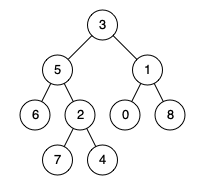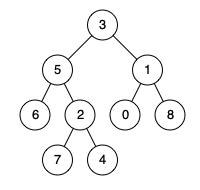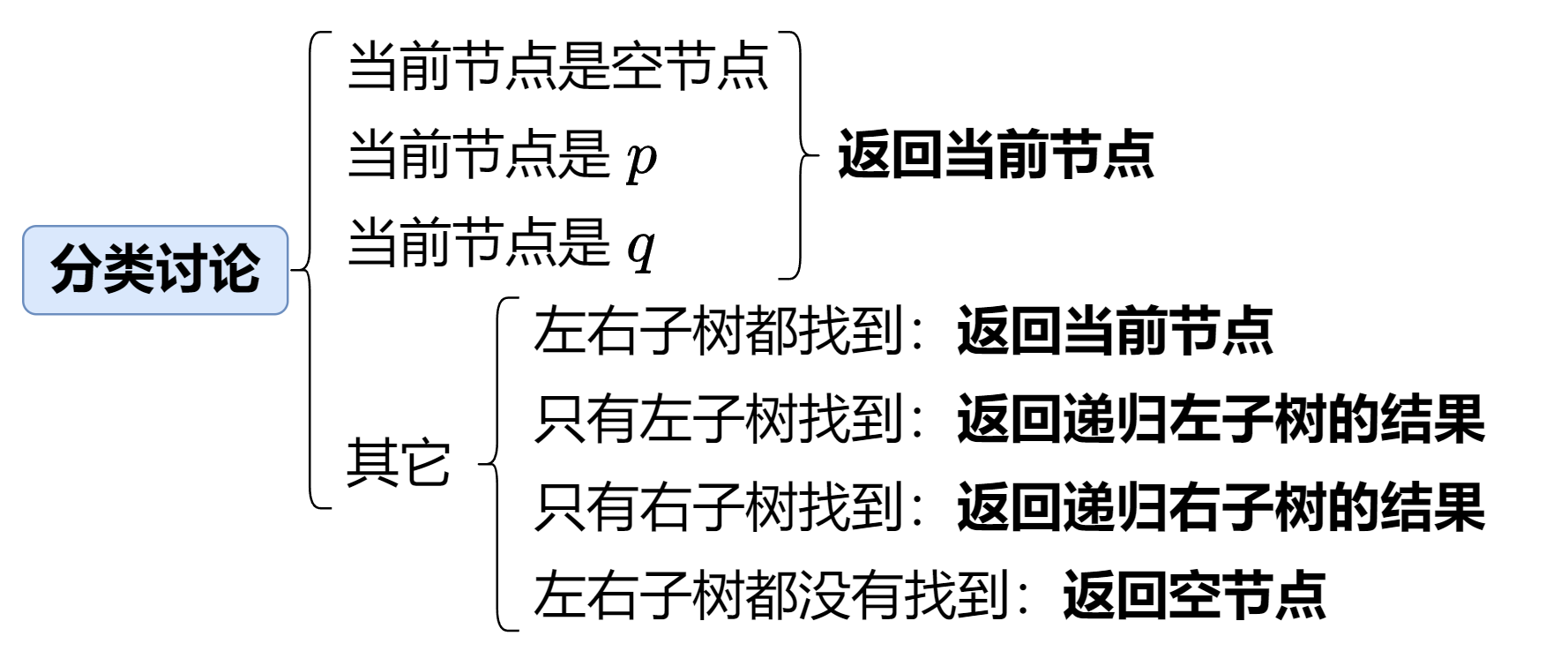题目描述
给定一个二叉树, 找到该树中两个指定节点的最近公共祖先。
百度百科中最近公共祖先的定义为:“对于有根树 T 的两个节点 p、q,最近公共祖先表示为一个节点 x,满足 x 是 p、q 的祖先且 x 的深度尽可能大(一个节点也可以是它自己的祖先)。”
示例 1:

输入:root = [3,5,1,6,2,0,8,null,null,7,4], p = 5, q = 1
输出:3
解释:节点 5 和节点 1 的最近公共祖先是节点 3。
示例 2:

输入:root = [3,5,1,6,2,0,8,null,null,7,4], p = 5, q = 4
输出:5
解释:节点 5 和节点 4 的最近公共祖先是节点 5。因为根据定义最近公共祖先节点可以为节点本身。
示例 3:
输入:root = [1,2], p = 1, q = 2
输出:1
思路&js代码
1、递归

var lowestCommonAncestor = function(root, p, q) {
if (root === null || root === p || root === q) {
return root;
}
const left = lowestCommonAncestor(root.left, p, q);
const right = lowestCommonAncestor(root.right, p, q);
if (left && right) { // 左右都找到
return root; // 当前节点是最近公共祖先
}
return left ?? right;
};2、存储父节点
class Solution {
public:
unordered_map<int, TreeNode*> fa;
unordered_map<int, bool> vis;
void dfs(TreeNode* root){
if (root->left != nullptr) {
fa[root->left->val] = root;
dfs(root->left);
}
if (root->right != nullptr) {
fa[root->right->val] = root;
dfs(root->right);
}
}
TreeNode* lowestCommonAncestor(TreeNode* root, TreeNode* p, TreeNode* q) {
fa[root->val] = nullptr;
dfs(root);
while (p != nullptr) {
vis[p->val] = true;
p = fa[p->val];
}
while (q != nullptr) {
if (vis[q->val]) return q;
q = fa[q->val];
}
return nullptr;
}
};